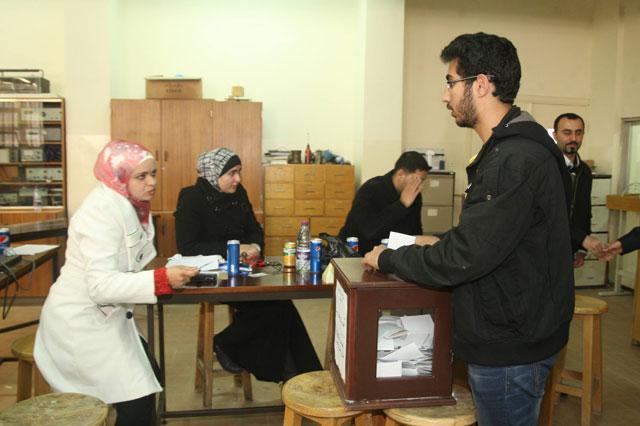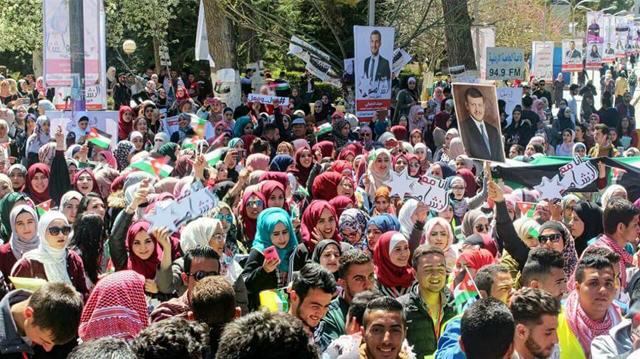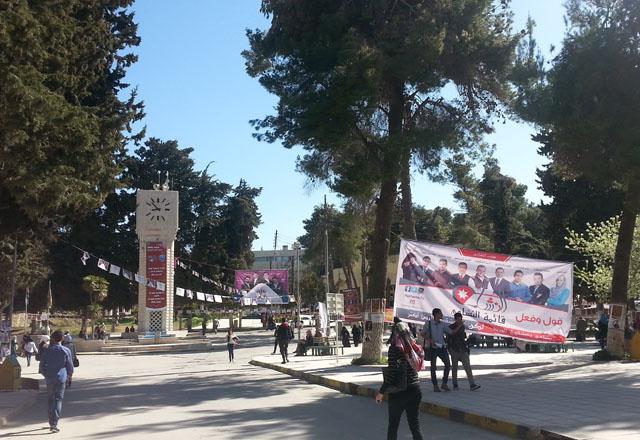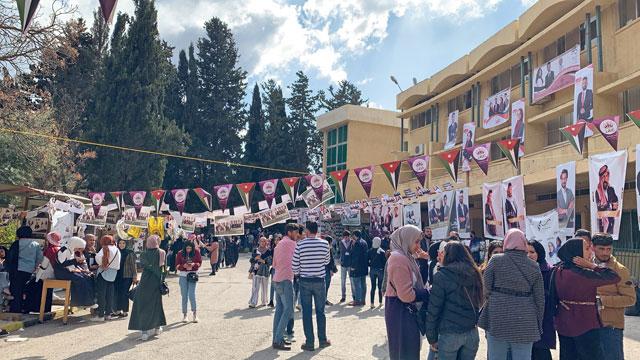You are here
UJ elections register higher turnout than last year — administration
By Suzanna Goussous - Apr 02,2015 - Last updated at Apr 02,2015

AMMAN — The University of Jordan (UJ) registered a 58.89 per cent voter turnout in Thursday’s student union elections, up from last year’s 56.67 per cent rate.
Azmi Mahafzah, UJ chairman of the higher elections committee, said at a press conference that the student union elections went “smoothly” from 9am and until the evening hours, when some outsiders entered the university with “questionable intentions”.
“Some 40 students from outside the university managed to enter illegally by climbing the walls and tried to start a scuffle and make a scene,” Muhammad Quwaider, of UJ’s public relations department, told The Jordan Times.
According to a statement issued by UJ President Ekhleif Tarawneh and carried by the Jordan News Agency, Petra, the intruders attempted to steal a ballot box at the faculty of law but failed.
Tarawneh said the invaders escaped once campus security arrived on the scene.
At the press conference, UJ Dean of Student Affairs Ahmad Owaidi said the administration will deal with violators “in complete transparency and democracy”.
He added that there are cameras all around the university and the university will take the appropriate disciplinary measures.
A total of 489 students competed for 70 seats in the polls, with 61 of the candidates belonging to lists, Owaidi added.
Zakaria Ghoul, from UJ’s media office, told The Jordan Times the majority of the winners were independent candidates.
“The highest voting percentage was in the faculty of dentistry which reached 90.97 per cent, whereas the lowest was in the faculty of pharmacology, which stood at 31.78 per cent,” Ghoul added.
The lists with the majority of votes were Al Awda, Nashama and Basmat Amal, according to Mahafzah.
Nashama won 7,181 votes, Al Awda won 4,252 and 8,046 students voted for Basmat Amal.
Nashama and Basmat Amal lists will get three seats each, leaving Al Awda with one, as seven seats are allocated for the candidates who belong to lists.
The system allows students to cast one vote for an individual candidate from their department and another for a list at the university level, which any group with at least seven students can form.
Related Articles
AMMAN — Students’ union elections at the University of Jordan (UJ) on Thursday recorded a 54.7 per cent turnout, lower than the last 2015 el
This year’s student union elections at the University of Jordan (UJ) went “peacefully and more successfully” compared to last year, with very minor violations, according to a UJ official.
AMMAN — Thousands of students at the University of Jordan voted to elect their student council on Thursday, sifting through more than 700 ca

















